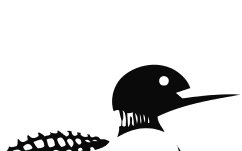
It’s one of those weeks when a refresher on the meaning of antisemitism feels necessary.
In Montreal, an Orthodox Jewish man walking with his three young children
In Victoria,
appeared on one of Canada’s oldest synagogues: “Jews are evil because genocide is evil.”
An Ontario psychotherapist shared a post seeking a therapist for a client — on the condition the therapist not be an “anti-Zionist.” And this week, the Toronto International Film Festival
a documentary about the October 7 Hamas attacks — apparently because there was no “licensing agreement” with Hamas for footage the terrorists filmed of their own massacre of Jews.
TIFF’s CEO issued a
, referring to October 7 as an event and diluting the issue by inserting “Islamophobia” alongside antisemitism. In my
I said that “Islamophobia” should never be mentioned in the same breath as “antisemitism” and clearly, Islamophobia has nothing to do with the matter. In fact, it was Palestinians who massacred 1200 Jews and others on October 7 and no, it wasn’t an event. It was an atrocity.
None of these incidents are isolated. Together, they reveal antisemitism surfacing in ways both brazen and insidious, infiltrating public discourse, professional decisions, and cultural institutions.
One of the most troubling dynamics is how our political leaders have set the tone. Over recent months, the federal government has maintained a steady drumbeat of criticism against Israel. A day rarely passes without a senior minister — or the prime minister — commenting negatively about Israel. This constant targeting fuels an environment in which antisemitism seeps into Canadian daily life. Politicians must understand that their words can give implicit permission for hostility on the proverbial Canadian street.
Canada once led in fighting antisemitism — chairing the International Holocaust Remembrance Alliance and shaping global strategies to combat hate. That leadership now feels absent. Our
for Preserving Holocaust Remembrance and fighting Antisemitism resigned out of frustration. It is not too late to change course, but it will require the will to do so.
What happens in the Middle East should never dictate how we treat one another here at home. Targeting Jews — or any group — because of overseas events undermines Canada’s core values of respect, tolerance, pluralism, and coexistence. This is not simply about foreign policy — it is about the moral climate within our borders.
Antisemitism is an ancient prejudice that adapts to the times. Today, it often hides behind the language of politics, social justice, or criticism of Israel, but its core hostility is unchanged. The International Holocaust Remembrance Alliance (IHRA) working definition — adopted by Canada and over thirty other countries — makes clear
Calling for or justifying violence against Jews.
Spreading conspiracy theories about Jewish control of media, finance, or government.
Holding all Jews collectively responsible for the actions of some.
Denying or distorting the Holocaust.
Claiming Israel’s existence is inherently racist.
Applying double standards to Israel not expected of other democratic states.
Using antisemitic imagery to depict Israel or comparing Israeli policy to Nazi Germany.
Why does this matter? Because antisemitism is not just a Jewish problem — it’s a societal toxin. It corrodes safety and belonging for Jews, but history shows it never stops there. Hatred tolerated in one form inevitably spreads, targeting other minorities, dissenters, and anyone outside the dominant ideology.
Confronting antisemitism is therefore a Canadian responsibility. It demands moral clarity and courage: speaking up when antisemitic tropes appear, challenging discriminatory practices, holding institutions accountable, and expecting fair, urgent reporting from the media. It means refusing to accept the casual prejudice creeping into public life.
The physical violence in Montreal and cultural discrimination at TIFF that we have seen in a span of a week should be a wake up call.
Prejudice left unchecked will grow. If we allow antisemitism to take root in our workplaces, schools, politics, and culture, we will have betrayed not only the Jewish community but the promise of Canadian democracy itself.
The Canada we strive for is one where inclusion and dignity are not abstract ideals but lived realities. Protecting that vision begins with the recognition that antisemitism — in all its forms — has no place here.
Avi Abraham Benlolo is the CEO and Chairman of The Abraham Global Peace Initiative, a Canadian think-tank.
















